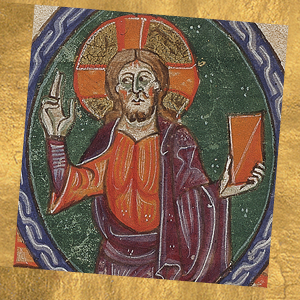St. Theresa Benedicta of the Cross (Edith Stein), Carmelite, Virgin and Martyr, Patron of Europe

“Life in a Jewish family”
Born in 1891 into a loving, observant German Jewish family on the holiest day of the Jewish calendar, the Day of Atonement, Edith Stein was an extraordinary student. Later she would publish an account of her family’s life, Life in a Jewish Family, as a testimony of Jewish humanity for those who had been “brought up in racial hatred from their youth.” But by the age of 14, this brilliant young woman had come to a conclusion. There was no God. And if he didn’t exist, there was no point in speaking to him. “I consciously decided, of my own volition, to give up praying,” she wrote.
After a brief period as a nurse in a World War I field hospital, Edith began to study philosophy. Her abilities and passionate pursuit of the truth soon attracted the attention of some outstanding German thinkers, among them her mentor, Edmund Husserl, one of the greatest philosophers of the day. Edith herself wanted to be a philosophy professor, but in the Germany of Edith’s time, this was impossible for a woman and a Jew.
The power of the Cross
During her studies, Edith encountered a friend whose husband had just died. Edith, the atheist who tirelessly sought the truth about the world and man, was struck by the “divine power” in this grieving woman, a power the cross “imparts to those who bear it…. It was the moment when my unbelief collapsed, and Christ began to shine his light on me – Christ in the mystery of his cross.”
Several years later, this “collapse” of her unbelief was sealed when she read St. Teresa of Avila’s autobiography. Edith was baptized in 1922, an event she experienced as both the confirmation and the fulfillment of her Jewish identity. She continued to write philosophical works and to lecture, learning that she could pursue “scholarship as a service to God.”
While Edith was discovering that the truth she so passionately sought was a Person to whom she wished to give everything in love, some of her countrymen were preparing a colossal rejection of God and of human dignity. Edith wrote, “I had heard of severe measures against Jews before. But now it dawned on me that … the destiny of these people would also be mine.”
“…the necessity of my own holocaust.”
As the situation in her country worsened, Edith understood that she had to give her life for her beloved people, who were also God’s people. What she had once said in the years before World War II, referring to her intellectual work, would become literal truth: “Every time I feel my powerlessness … to influence people directly, I become more keenly aware of the necessity of my own holocaust.”
Edith made herself a “holocaust,” the Old Testament term for a sacrificial offering destined entirely for God. She entered the Carmelite convent in Cologne as Sister Teresa Benedicta of the Cross. The beginnings of the systematic extermination of the Jews in Germany soon obliged her to escape to a convent in Echt, Holland. She wrote, “I never knew people could be like this, neither did I know that my brothers and sisters would have to suffer like this….”
Edith prepared a will, which read: “I ask the Lord to accept my life and my death … so that his kingdom may come in glory,” for the sake of the suffering Jewish people, and “for the peace of the world.” When the Nazis invaded Holland, the soldiers finally came for her and her sister Rosa, who had also converted. Taking Rosa by the hand, Edith said simply, “Come, we are going for our people.”
Edith Stein, St. Teresa Benedicta of the Cross, died in the gas chambers of Auschwitz on August 9, 1942. Her identification with both her people and her crucified Lord were so complete that Pope John Paul II could say at her beatification in 1987: “We bow down before the testimony of the life and death of Edith Stein … a personality who united within her rich life a dramatic synthesis of our century. It was the synthesis of a history full of deep wounds … and also the synthesis of the full truth about man.”
More upcoming events:







 Your contribution for a great mission
Your contribution for a great mission

